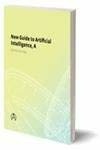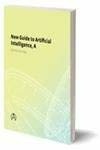Edition
Preface
1 AI: what is it?
definitions: what would it look like if I saw one?
True AI Story: 1.1-ELIZA meets PARRY:
the syntax is willing but the semantics is weak
a history of scaling down
categorizations of AI work
the goals of AI research
the heuristic programming approach
the Samuel phenomenon
2 AI and the Science of Computer Usage: The Forging
of a Methodology
how to use the essential tool?
first specify, then verify
the nature of AI problems
a methodology of incremental exploration
rapid prototypes to the rescue?
supportive environments
forging a new methodology
is AI so different?
3 The Major Paradigms
symbolic search spaces
planning intelligent solutions
SSSP infrastructure
the pivotal role of searching strategies
heuristic pruning
connectionism: a possible alternative?
connectionism: the second coming
on not losing their inhibitions
the need for decay
subsymbolic connectionism: the good news
when is an AI system like a piece of fine china?
subsymbolic connectionism: the real news
reasoning with amorphous complexity
the myth of empirical guidance
what's the stopping rule?
single-minded models
philosophical objections
potential solutions to the dilemma
formal analysis
software support systems
approximate translation-the truth about mendacity
the SSSP and the CP: integration, bifurcation,
or annilation?
simulated evolution: guess and try it out
'bad' paradigms
4 The Babel of AI Languages
it's all done by manipulating symbols
LISP
flexibility
the magic of recursion
code-data equivalence
the special assignment
lists of properties
PROLOG
the independence of declaration
loss of control: better or worse?
extralogical pollutants
negation as failure
verify or compute
bidirectionality
pattern matching
the promises of PROLOG
parallelism
a specification language
heuristic controls
object-oriented programming
programming environments
LISP environments
LOOPS
POPLOG
True AI -Story: 4.1. DIMWIT (Do I Mean What I Tell):
A PA (Programmer's Assailant) System
5 Current Expert Systems Technology (CEST)
experts with tunnel vision
6
the basic assumptions and the criticisms
what can be CESTed?
explanations and context sensitivity
updating knowledge bases and machine learning
let's dig deeper
logical decision making
human and computer decision making
classes of human decision making
connectionism: a possible answer?
knowledge elicitation
knowledge engineers and the third degree
automatic learning from examples
empirical techniques
CEST: where is it and where is it going?
Knowledge Representation: A Problem of Both
Structure and Function
why networks?
why neurons?
pandering to.evolution: beware of classical reconditioning
neural architectures: in the beginning
knowledge representation: structure and function
the SSSP and the CP: representational issues
knowledge representation in the CP
functionally distributed representations
symbolic connectionist representations
winner-takes-all subnets
hybrid connectionism
totally distributed representations
path-like architectures in the CP
bath-like architectures in the CP
knowledge representation in the SSSP
logic-based representations
procedural representations of knowledge
semantic networks
elements of structured knowledge: frames,
scripts, and schemata
7 Vision: Seeing is Perceiving
bottoming in: operators canny, uncanny,
and cannyless
pixel processing
edges and lines
vertices or junctions
texture: a truly superficial feature
illumination, reflectance, and other sources
of nuisance
the intrinsic image
model-based vision systems
True AI Story: 7.1
beer cans, broomsticks, etc.
seeing as perceiving
oversight and hallucination
the modularity of human vision
eyeballs and nervous optics
biological feature detectors
humaa perceptual behavior
breaking up context
structuring top-down information
a cognitive model of word recognition
the eye of the robot
general theories of visual perception
the vision of connectionists
8 Language Processing: What You Hear is What You Are
natural language
what mode of natural language?
the goals of AI-NLP
natural language: the essential ingred'ients
phonetics and phonology
the lexical level and above
generation and analysis
natural language generation (NLG)
text generation systems
empirical guidance for NLG
natural language understanding (NLU)
syntax, grammars, and parsing
grammars
furious transformational grammarians
sleep curiously
transition networks: augmented and otherwise
unification and the new grammatism
semantic definite clause grammars (SDCG)
NLP and a formal complaint
semantics
the meaning of semantics
the atomic struture of meaning
the case of the missing-blocks world
True AI Story: 8.1 SHRDLU and a "SORRY" story
revolting computational linguists
scripted NLU and its dependencies
True AI Story: 8.2 Try it again SAM
the conceptual dependency notation
a Swale of a tale
True AI Story: 8.3 Another SWALE of a tale
giving semantics preferential treatment
bidirectional NLP
pragmatics?
machine translation (MT)
natural language interfaces (NLI)
networks for NLP
9 Learning To Do it Right
can we have intelligence wit�1out learning?
can we have AI without learning?
learning paradigms in AI
learning as the accretion of symbolic structures
learning as the adjustment of link weights
external tutoring: learning by being told
learning on the path
learning in a bath - taking the plunge
climbing hills because the 're there
rote learning: if it might be useful, store it
learning generalities
induction
overgeneralization and refinement
a first guess and generalization
True Al story: 9.1. Underneath the arches:
an everyday story of concept learning
competitive learning
learning particularities: removal of unwanted
generalization
EBG, or is it EBL?
the EBL viewpoint
mechanized creativity
learning by introspection
rediscovering things
learning by analogy
learning at the knowledge level
soaring through search spaces
the more you know the slower you go
on finding needles in haystacks
when to learn and what to learn
giving credit where it is due
unlearning
10 Foundations of AI: Can we find any?
foundations: why dig for them?
formal foundations
a disinterested user's guide to the FOPC
the curse of nonmonotonicity
logical odds and ends
True AI Story: 10 .1 It is not a closed world after all
the epilogic
methodological foundations
the roles of programs in AI
programs as theories
programs as experiments
rational reconstructions in AI
sorting out AI methodologies
philosophical foundations
there's nothing special about you, or me
building the foundations on the CP
undermining the foundations of the CP
total disbelief: let's not be Searle-ish
11 Prognostications, or W(h)ither AI?
abstract AI and concrete AI
is the mind an appropriate object for scientific study?
True AI Story: 11.1. Sand in the works
AI as a magnifying glass
AI: can it be practically useful?
AI: just wait till we get into parallel hardware
last words
References
Author Index
Subject Index




